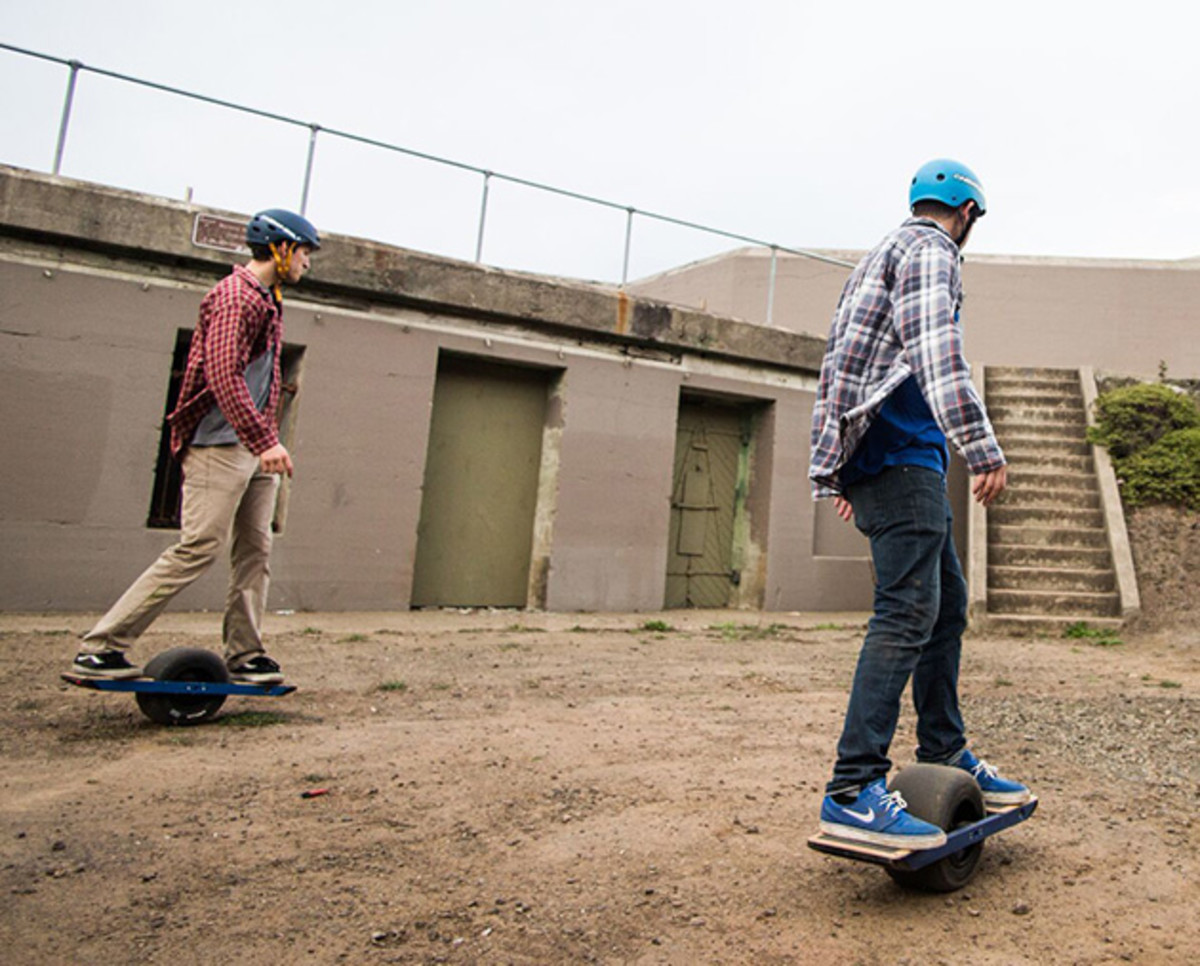Tech Talk: Onewheel offers every board rider a whole new on-land sport

Professional stand up paddleboarder Luke Hopkins lives life on a board. When he’s not on the water, he still has the same opportunity to competitively balance his body, keeping him in better SUP shape, all with the use of the Onewheel.
The Onewheel, created by Stanford engineer Kyle Doerksen, serves as an electric mode of transportation, with a self-balancing board positioned over a single, heavy-duty wheel, propelling riders in any direction for both getting around and for sport, the inventor tells SI.com.
As the rise of the Onewheel begins with its debut last year and launch this year, we look at the technology and the in-sport use.
- MORE EDGE: North Korea set to host snowboarding's elite
What’s the purpose of the Onewheel?
“That is an interesting question,” Doerksen says. The product started as a way to get around, whether commuting short distances to work or even moving product around a showroom floor. But as Doerksen has tried to model the rise of the Onewheel after the rise of SUP, he’s seen a new use evolve.
“Some of our athletes have extended (the use) further than we had imagined,” he says. “Pro SUP Luke (Hopkins) and these guys, they are always doing these shuttles down some trail for a mile and they started Onewheeling for carrying their stuff.”
Doerksen says the quick evolution of the Onewheel has him seeing it as the rise of a new board sport. And he built it with a “burly” silhouette to make it work.
What is the Onewheel?
The wheel itself resembles a scaled-down Formula 1 racing tire at 6.5 inches wide and 12 inches tall. The aerospace aluminum frame and maple board work with the software built into the product to use gyroscopes and accelerometer sensors to know the angles of the board and axis and use an algorithm to tell the board how to move based on the leaning of the rider. This all adds up to a rider turning sharply, shaping curves and hitting 16 miles per hour on a linear ride.

says he’s constantly tweaking the algorithms based on the riding feedback obtained by the boards, creating more contoured rides at higher speeds.
The Hopkins use
While his primary use is for enjoyment, he tells SI.com, using the Onewheel does make his life easier as an alternative form of transportation.
“I also practice my board riding skills on a Onewheel as it makes regular practice more accessible,” Hopkins says. The ability of the Onewheel to go in either direction equally has allowed Hopkins to practice riding goofy footed—normally he’s a regular foot rider—and has “made training my muscles and balance so easy that I am becoming a better rider in both positions.”
He says that the non-stop balancing of SUPs and similar balancing needs on a Onewheel play off each other, allowing him to build core strength and improve stabilizer muscles in his knees and ankles when on land. “I am a better SUP paddler and snowboarder because of the Onewheel riding I have done,” he says.
Can it go off-road?
That’s the part Hopkins likes best. The ruggedness of the construction and the size of the wheel allows the Onewheel to handle everything from mountain bike trails to beaches, with grass, gravel, dirt, rock and much more in between.
Tech Talk: The secret weapon behind Anthony Davis' NBA training regimen
For Hopkins, he takes to mountain bike trails. “Flying down a trail with dust flying into the air,” he says, “and going over roots and rocks and riding up on the banked turns of a trail is pretty amazing when you feel like you are surfing the trails.”
With the self-balancing nature of the board, Hopkins says he gets the feeling of carving in powder and of surfing. “The Onewheel really does make surfing the earth a reality and accessible,” Hopkins says.
Hopkins had a quick learning curve, as expected from a professional board rider. But even for the non-pro board riders out there, the learning curve isn’t steep enough to keep people off it, but it does have enough depth to keep folks needing to learn as they increase speed and challenge themselves with trickier terrain.
What’s next?
Hopkins likes the idea of Onewheeling becoming a sport. As a SUP paddler, he’s limited by the weather and need for water and Onewheeling doesn’t have those limitations. Doerksen agrees. “The natural and built landscape out there is so fun to ride,” he says. And with a more mature demographic riding the Onewheel than, say, the 14-and-under crowd common on skateboarding—the price point takes it into a similar realm as purchaing a SUP board—Doerksen sees a larger reach for the future of the Onewheel.
For those folks who want to live life on a board, but don’t always have surf or snow to do it, Doerksen hopes he has the answer.
Tim Newcomb covers stadiums, sneakers and training for Sports Illustrated. Follow him on Twitter at @tdnewcomb.
